There are times when don't have enough worm castings for your next garden project:
- your garden is too large and you don't have enough vermicompost
- you have just split your bins and have to wait till next harvest
- you have used all your vermicompost recently but have a new project that needs some more
One solution would be to use a traditional compost if you have some, go buy some quality vermicompost from the local garden center or make your own compost tea from the little bit of finished vermicompost you have at hands. The latter is what I wanted to explore and this is what I will cover in this post.
What is compost tea?
Compost tea is a liquid produced by extracting fungi, bacteria, protozoa and nematodes from finished compost. The tea production a brewing process simple to master and does not require too much equipments.
Beware, Compost Tea and Worm Tea are not the same. What people usually (wrongly) call Worm Tea is actually leachate. It is the liquid that drains directly from the bottom of a worm bin. It contains uncomposted food particles and when left for over a day in the collection tray will become anaerobic. It can also contain volatile compounds that can be toxic to the plant. However, if you insist on using leachate, then at least dilute it 10:1 with water.
It is also said you could tilt the balance of the tea towards one of the category of micro-organisms mentioned above by choosing your compost and the food (to feed the organisms) added to the brew.
There are several ways to brew the compost tea, the one that interests me is the active aeration process that creates what is called Actively Aerated Compost Tea or AACT. During the whole brewing process, air is forced into the brewing mixture in order to maintain an aerobic environment.
In a nutshell what you need to brew AACT are:
- some finish compost/vermicompost
- rain water or dechlorinated water
- a bucket in which you will make the brew
- an air pump
- an airstone or air diffuser
- optionally a mesh bag to hold the compost or vermicompost
The brewing process would run between 24 and 48 hours, with 36 hours being the point where there should be a balanced number of each of the categories of micro-organims mentioned above. The brew is then to be used in the next 4 hours because the micro-organisms are aerobic living beings and would consume the oxygen in the brew and will die afterwards.
That seems quite an effort to make compost tea, so is it worth it?
What are the benefits of using AACT in the garden?
The idea of using compost tea in your garden is not so much adding nutrient, this can be obtained by adding finished compost alone, however the purpose of applying the tea is to inoculate the garden with a large number of beneficial micro-organisms.
Those micro-organisms are already present in your garden soil but unless you do a soil test there will be no way to know how the balance is and if the majority of organisms there are what your plants need. This where compost tea can help you with. By brewing for a tea with a balanced number of all four main types of organisms you will introduce the ones that are needed and let the plant decide.
Here are the claims on the benefits of using Actively Aerated Compost Tea:
- improve the growth of your crops by introducing beneficial organisms that will turn organic matter and other nutrients in the soil into components directly consumable by the plants.
- finished compost acts slowly release nutrients into the soil whereas with AACT you have extracted them and those soluble will be instantly available to the plants, an instant boost.
- AACT increases your compost range of action, with couple of handfuls of rich compost or vermicompost you can brew five gallons of AACT that can be further diluted to twenty gallons or more while retaining its benefits.
- AACT does not burn your plants, even when used pure and can be used as much and as often as you want. This is not the case with chemical fertiliser or leachate from the worm bins (worm tea, worm wee...)
- there are studies that have shown that AACT does increase certain crops resistance to diseases and pests. AACT can even eliminate some types of bacterial or fungal diseases from the soil.
- AACT can be applied as folia spray which the plants respond very well too as they have the ability to quickly absorb nutrient from their leaves.
- etc...
Is all of that true?
I'm no expert in the area but have found some people questioning the validity of the points above:
- does your soil really need more bacteria/fungi? It could already be rich in a well balanced micro-organism community
- how can you be sure the micro organisms from the compost tea won't instantly die as you apply it to the soil.
- can AACT be dangerous, some bad bacteria are aerobic and would be multiplied too depending on what is in your compost
These are all valid questions in my opinion but unless you know what your soil already have and you know the quality of your compost then I think adding more organisms should not hurt. Most of the time a soil will be good in bacteria but would lack in fungi so aiming for a more fungal dominant tea would be a good idea.
Personally, I think ACT is not the magic solution, it is only one step in your garden maintenance plan. The major steps being:
- having a good draining soil with good moisture retaining properties
- presence of trace elements by using rock dust or good compost/vermicompost
- a good amount of organic matter (including compost/vermicompost)
- presence of beneficial micro-organisms (including earthworms both deep dwellers and compost worms) to process the organic matter. The micro-organisms can be further provided by applying fresh finished compost.
- a nice layer of mulch or living mulch to protect the soil surface
Compost tea would just be a plus on top of all these. I could not think or find any reasons against it, and having split my worm bins several times for the last 10 months, I don't have as much vermicompost as I would like to make the potting mix that would go in all my new (empty) garden beds. I needed something until next harvest so decided to give compost tea a go.
How I brew my own Actively Aerated Compost Tea
My plan was to brew between 50L (13 gal) and 200L (53 gal) of compost tea, so an aquarium pump or two will not be sufficient. A while ago, I saw and bought a second hand Sonic P-125 (125L/m or 33gal/m) pump for only $75 and kept it aside for this project, it should be able to handle my largest barrel (220L or 58gal) easily. I now needed a container and a big airstone. I began with a salvaged 25L portable water barrel but could not find a decent airstone that is large enough so decided to create a air diffuser out of PVC tubes.
As for the brew recipe, I'm following the one from Tim Wilson from Microbe Organics (see links below). My choice of micro-organism food is a mix of what every I have at hands at that time from the list below:
- unsulfured molasses
- seaweed extract
- lucerne (alfalfa) meal
- oat meal
- corn flour
- comfrey leaves
As for the air diffuser, here was my first prototype:
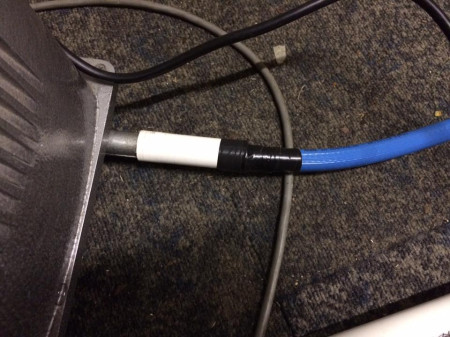
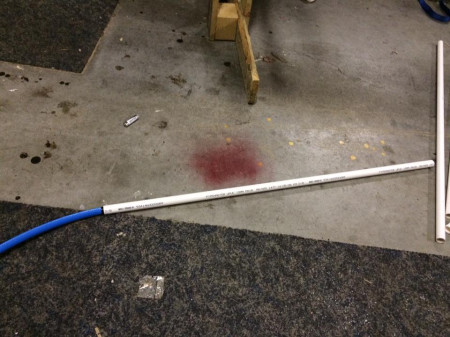
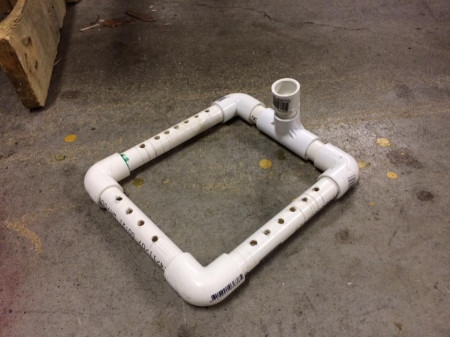

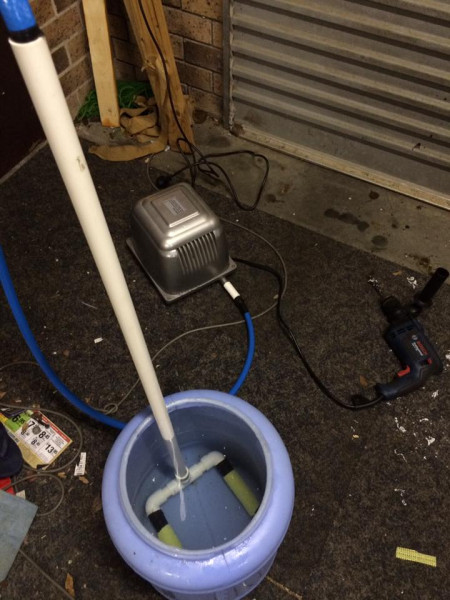
It seems to be working, however the airpump is rather strong and creates large bubbles which some people likes and other don't. I can always adjust the output by drilling holes in the vertical pipe.
Posted by The Little Worm Farmer on Friday, 7 October 2016
Posted by The Little Worm Farmer on Saturday, 8 October 2016
Posted by The Little Worm Farmer on Monday, 10 October 2016
Posted by The Little Worm Farmer on Saturday, 15 October 2016
I later on did upgraded the barrel from 25L to 60L (16 gallons) followed by an upgrade on the diffuser from a square shape to a octogonal shape one with holes pointing downwards to create more water movement in the bottom avoiding anaerobic spots.
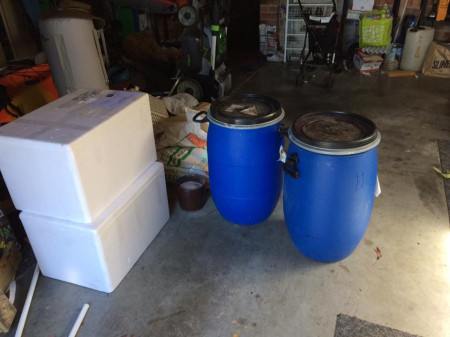
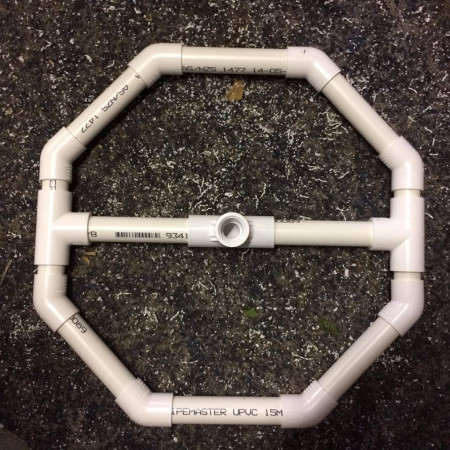
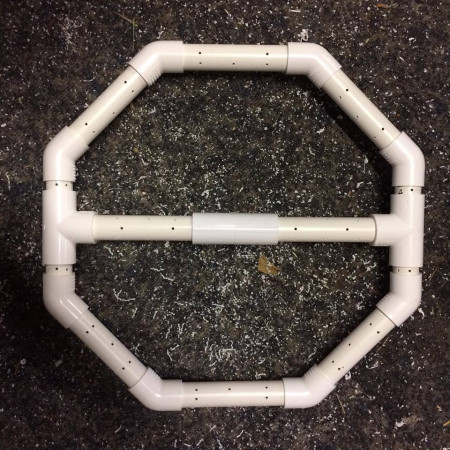
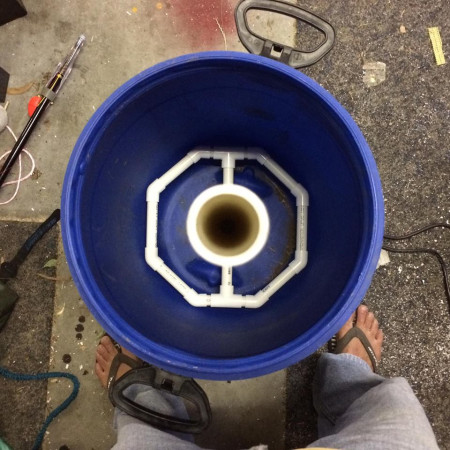
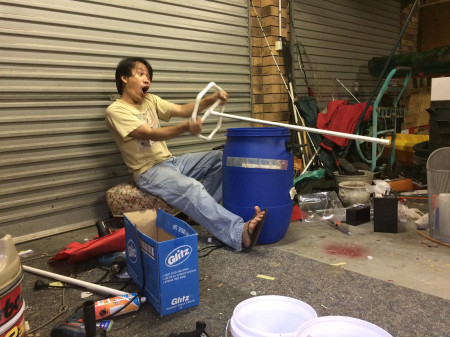
A quick check with an underwater prawning light allowed me to confirm that vermicompost dropped into the bottom of the tank are being moved around by the air bubbles.
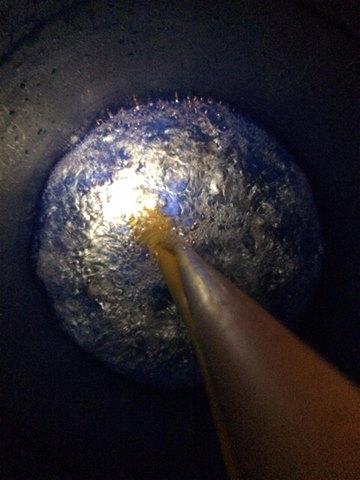
Second batch of vermicompost tea of the season.
Posted by The Little Worm Farmer on Monday, 17 October 2016
Here are the parts used for the PVC diffuser:
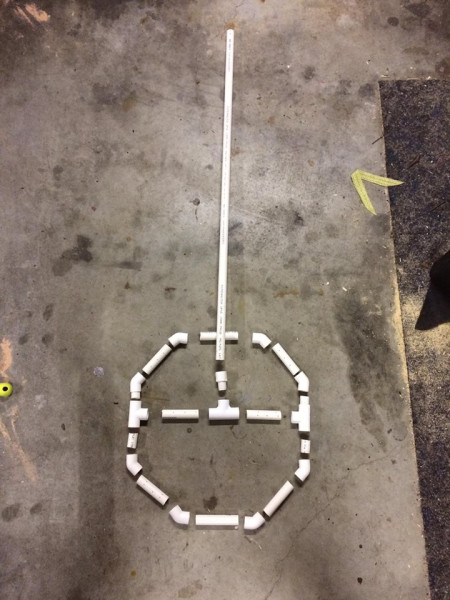

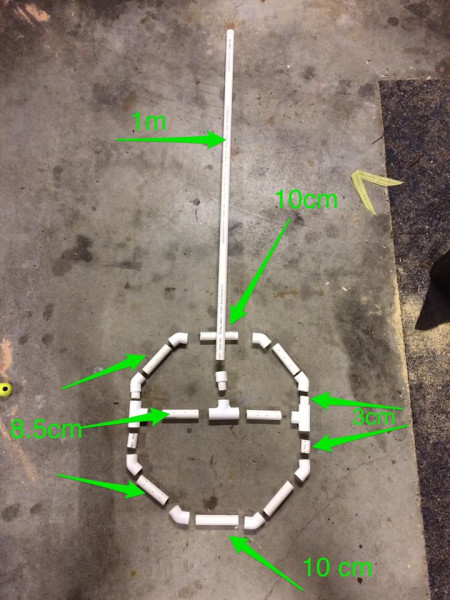
I later on used the 60L barrel lid to hold the diffuser straight and still by drilling a hole in it and used a insulation tape to prevent the diffuser vertical pipe to slide too much up.
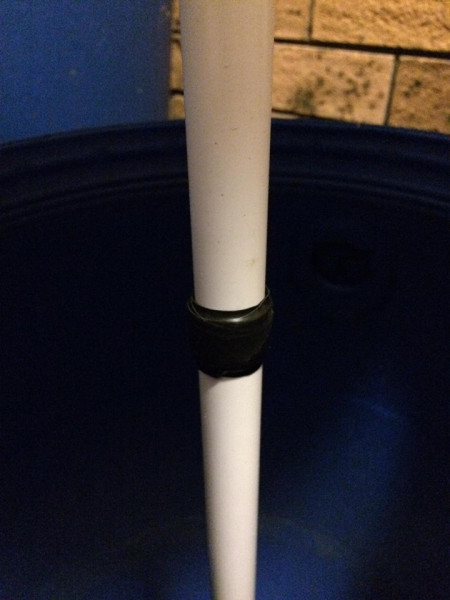
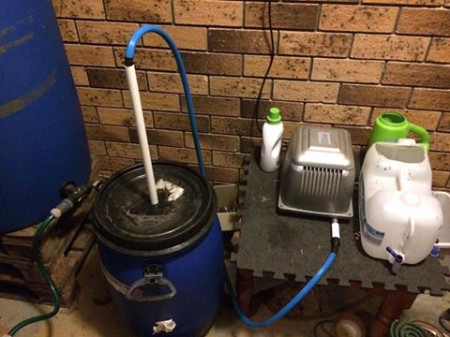
A last test to make sure everything is working properly as I have dismantled the air diffuser to take the photos of the parts. All looks good, ready for starting the brew tomorrow (Friday) morning before work. It will then be ready on Saturday late afternoon.
Posted by The Little Worm Farmer on Thursday, 3 November 2016
It rained too little these days so I've only tap water to use. Late this afternoon the compost tea will be ready and I need to dilute it to increase my watering capacity. To shorten the time for chlorine to evaporate I wanted to aerate the tap water so split the air inlet into two sections with a PVC valve allowing me to adjust output to one side or another.
Posted by The Little Worm Farmer on Friday, 4 November 2016
This setup seems to work pretty well and I'm happy with it. Next step is to get a microscope and play with micro-organism watching sessions :-D
External resources
I based this post on the following articles, website and books:
- Microbe Organics by Tom Wilson
- Compost Tea Information by the Soil Food Web institute
- Compost Tea by Garden Myths
- Worm Farming Revolution book/ebook by Pauly Piccirillo
- Thanks to Larry J. Shier from The Blue Worm Bin for answering some of my questions along the way.
Posted
in
A day in a worm farm on Nov 18, 2016
by Quoc-Huy Nguyen Dinh
